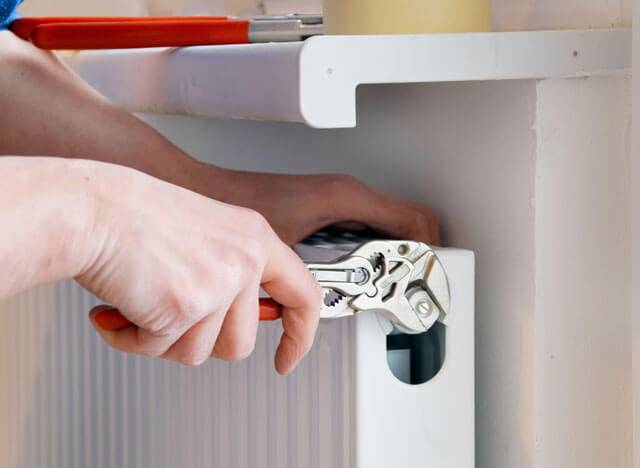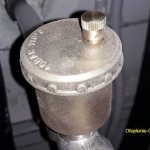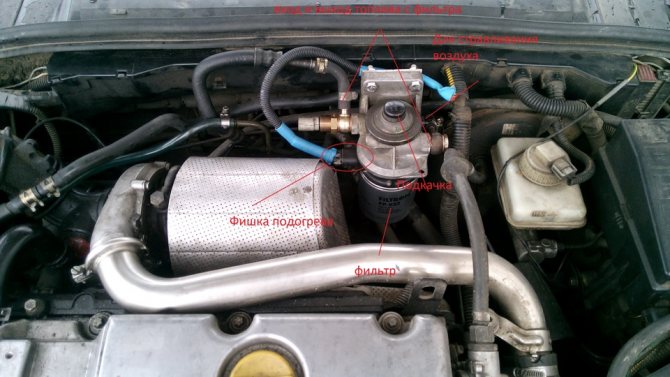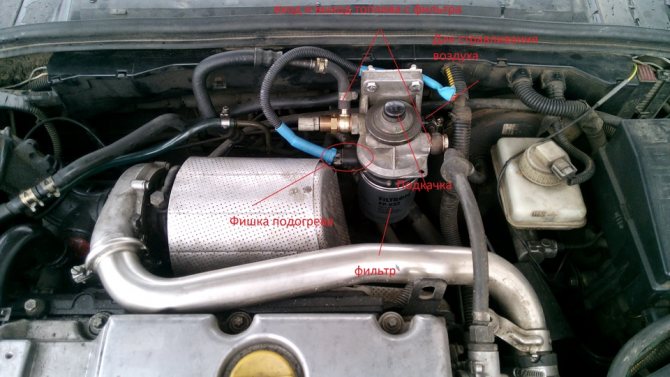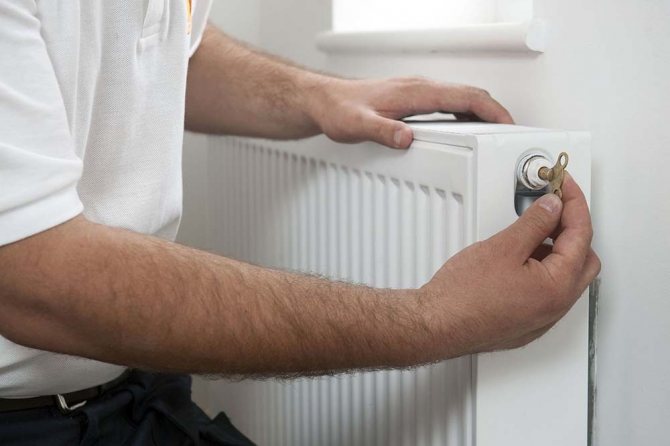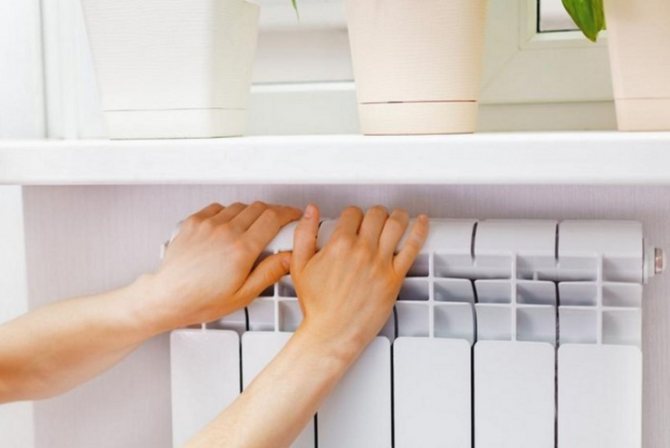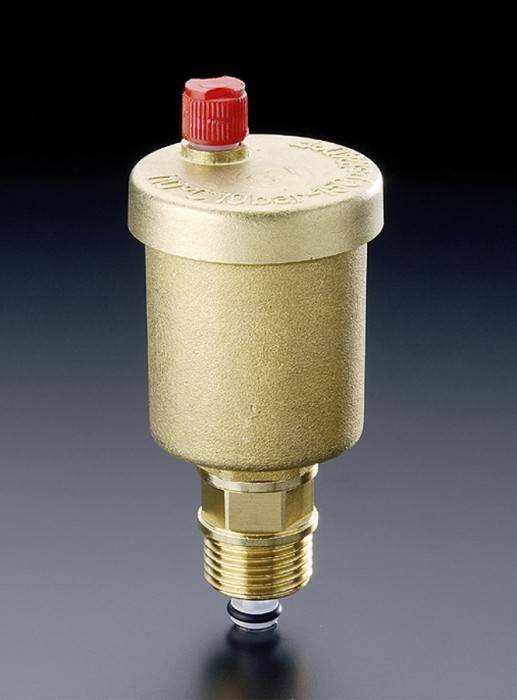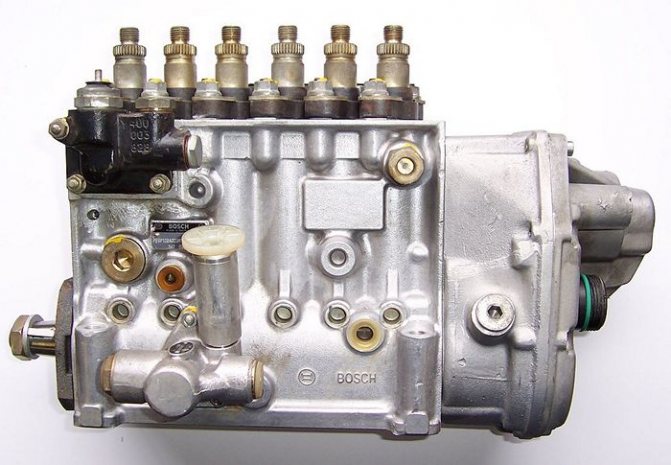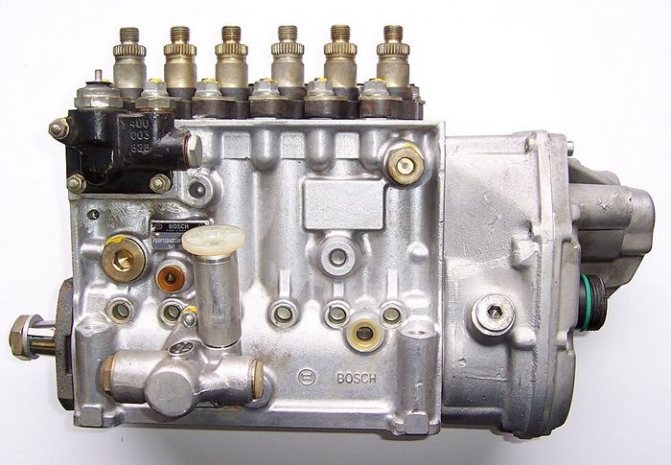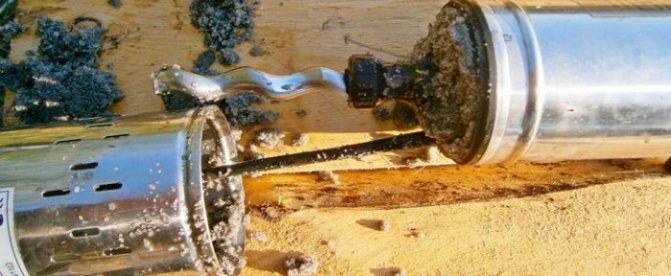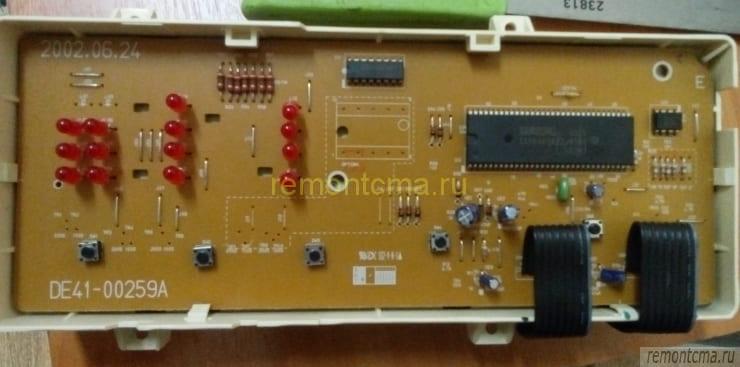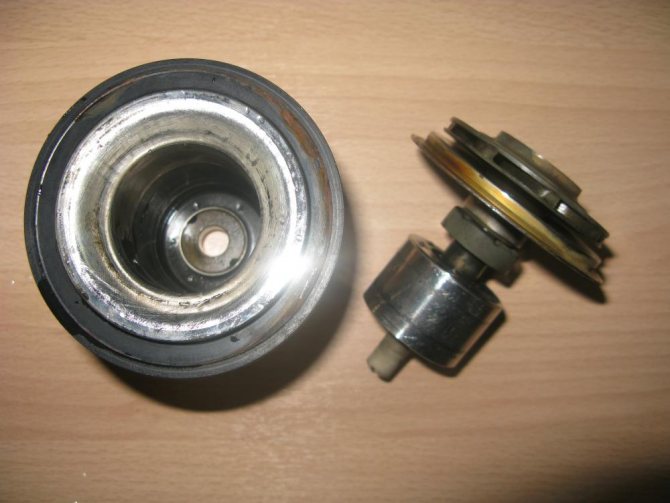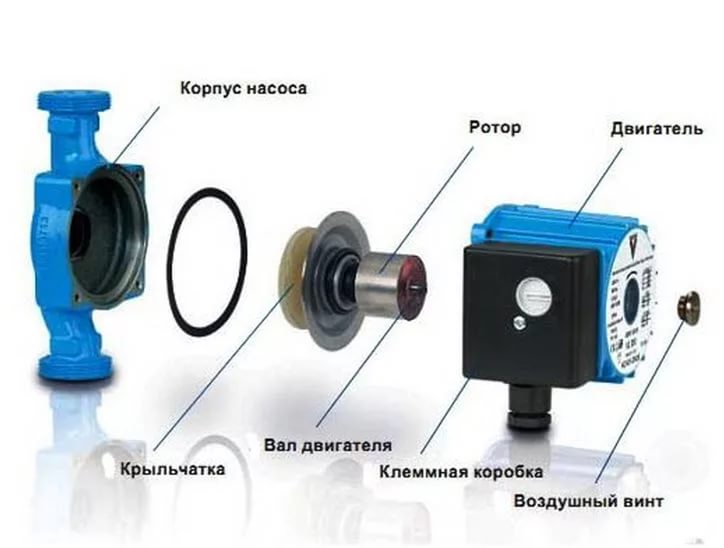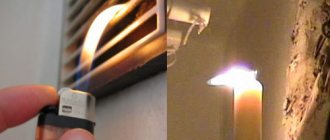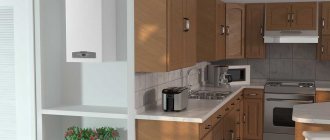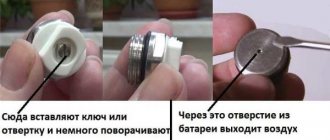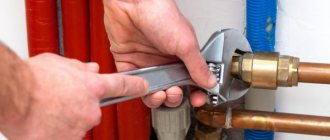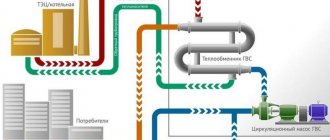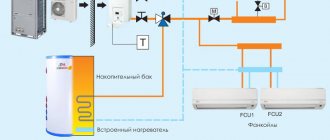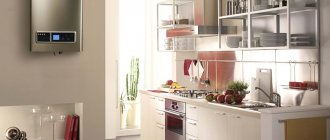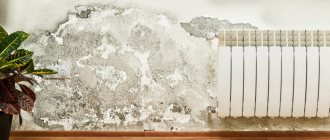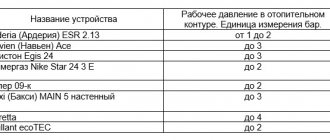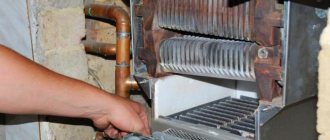The use of a drainage fecal unit in a private area is a ubiquitous phenomenon, since most often an individual sewage and water supply system is equipped at such facilities. High-quality pumping equipment is capable of operating the entire system, preventing flooding of privately owned objects or failure of one of the collectors. However, do not forget that a good faecal unit (regardless of the manufacturer and its capacity) requires periodic maintenance. Otherwise, there is a risk of "losing" the unit for a while or forever.
For what reason the faecal pump breaks down and how to deal with it, we will tell you below.
Drainage pump malfunctions and their repair
Important: the reasons for the malfunction of the fecal pump and the need for subsequent repair are the following points:
- Incorrect operating conditions (that is, exceeding the load on the device or incomplete immersion);
- Untimely preventive maintenance of the pump;
- Incorrectly mounted pump;
- Manufacturing defect.
Why does air appear in the heating system
There can be many reasons, here are just the main ones:
- The coolant contains dissolved air, which is released when heated. To a greater extent, this applies to systems where ordinary tap water containing a large amount of dissolved oxygen is used as a heat carrier. When the coolant is heated, oxygen is separated, forming many small bubbles, which create an air lock;
- The heating circuit was filled with coolant too quickly, as a result of which it was not possible to bleed all the air. The heating system should be filled slowly (on average, 1 floor - 1 hour), especially if it is an extended system with a large number of components;
- The required pipe slopes were not observed;
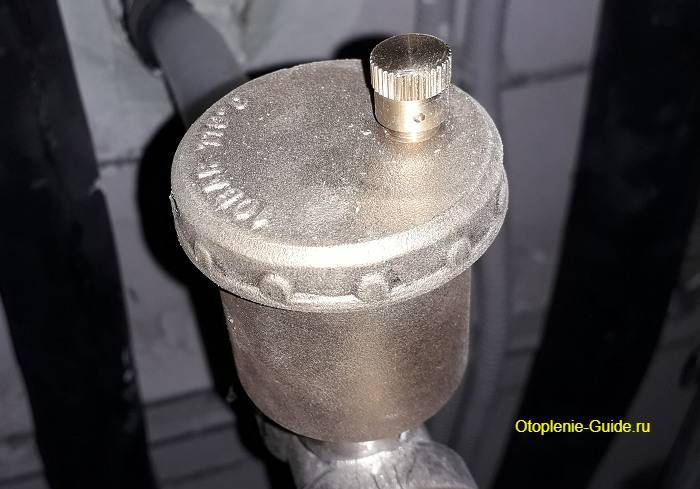
Automatic air vent in the mine.
- Air pockets always form after repair work. Repair or replacement of radiators, replacement of fittings, etc. - all this leads to airing of the heating system;
- Low pressure in the system can lead to an increase in the amount of compressed air, which will also create air pockets;
- The air vent is out of order or faulty;
- A leak in the heating system can also cause traffic jams;
- Oxygen permeability of heating pipes. To a greater extent, this applies to polymer pipes (except for those with an anti-diffusion coating), the walls of which pass oxygen into the system.
- Sometimes air collects in the corners of the pipeline. This indicates an error during installation: some sections of the pipes were not installed at the level. In such a situation, it is best to embed a tee in the problem area to install an air vent;
- Some low-quality aluminum batteries react with water, and as a result, air locks will form constantly. In such a situation, one can recommend one thing: use only high-quality heating devices, and not choose which is cheaper. It is recommended to replace a cheap device with a new one of higher quality.
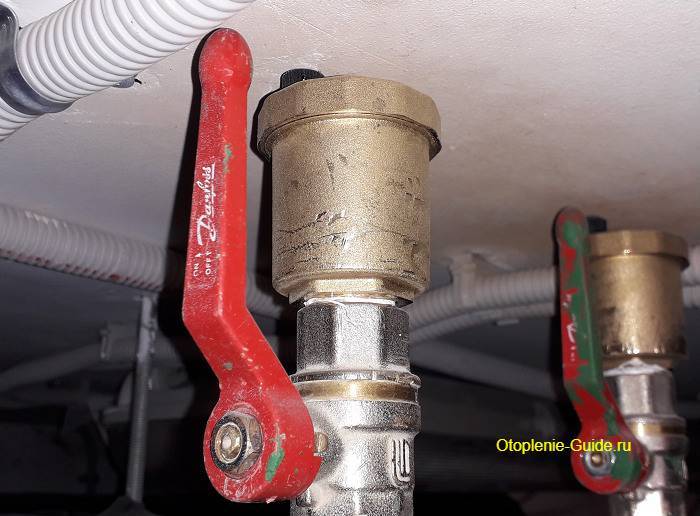

Air vent with Danfoss ball valve on the technical floor of the hotel.
Note! In multi-storey buildings, air jams are most often formed in apartments on the last floors, because the air always "tends" to the upper sections of the heating system.
Elimination of cavitation
What can be done to avoid the appearance of air in the well and the ingress of water with bubbles:
- Replacing the suction pipe of a small diameter with a larger one;
- Moving the pump closer to the storage tank.
Attention! When moving the pump, observe the established standards: the distance from the pump to the reservoir must not be less than 5 times the diameter of the suction pipe!
- Reduce the pressure of the suction element by replacing it with a smooth pipe, and the gate valve can be replaced with a gate valve, and the check valve can be removed altogether;
- The presence of a large number of bends in the suction pipe is unacceptable, they must be reduced or bends of a small radius of bends should be replaced with large ones. The easiest way is to align all the bends in the same plane, and sometimes it is easier to replace rigid pipes with flexible ones.
If all else fails, it will be necessary to increase the pressure of the suction side of the pump, raising the level of the reservoir, lowering the axis of the pump installation, or connecting a booster pump.
Note that all manipulations are shown based on a large volume of water consumption and the installation of powerful pumping devices. And, it is important that cavitation can manifest itself only at a depth below 8 meters. It is with this length of all elements and the presence of high pressure in the pipes, the liquid turns into a gaseous state and the water goes with air.
How to avoid air entering the system
Several situations must be considered here - when filling the system with a coolant and during its operation. Air vents and Mayevsky taps should be provided in its design, allowing the heating system to be vented. The recommendations given are for a closed, forced circulation system.
Installation of air vents
They are placed in critical places, such as pipe bends or their highest points of location. In many cases, when the heating system is constantly airing, they help to cope with this problem. There are manual and automatic ones.
- Manual air vents. These include, first of all, the Mayevsky crane, named after the inventor. Installed at the end of the battery, thanks to it you do not have to think about what to do if the heating system is airborne. With its help, you can independently discharge the accumulated air.
- Automatic air vents. They allow you to solve the problem of how to air the heating system without additional participation and costs.
| Manual air vent |
Filling the system with water
It is carried out from the bottom up with cold water. In this case, all taps must be open, except for those that work to drain the water. Thanks to this filling, the heating system will not be air-conditioned; as it rises, the water will squeeze air out of it. Filling is carried out smoothly, with a sharp rise in water, the formation of closed volumes and the formation of air bubbles is possible.
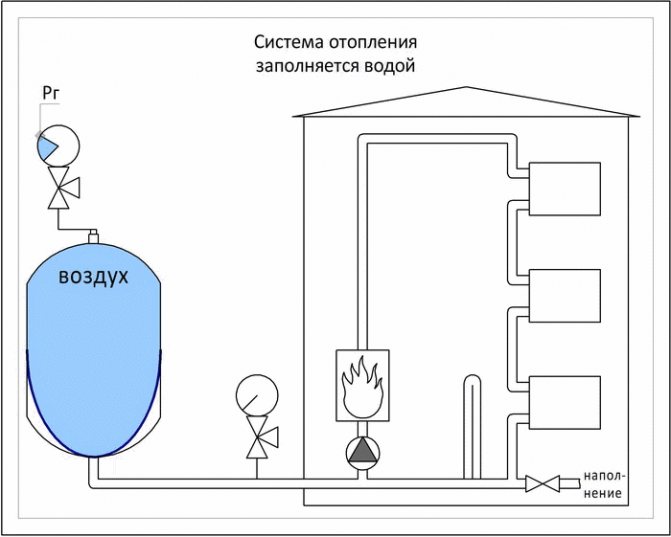

Filling the heating system with water
As soon as the water has gone through the open tap, it is closed, and so they gradually rise higher until the entire system is filled. After that, it is quite possible to start the pump, if everything is done correctly, then circulation will occur, and there is no need to puzzle over how to pump the heating system.
Reasons for the formation of air congestion
The finished closed-type heating system is hermetically sealed, but this does not guarantee the absence of air bubbles. Where does the gas come from in pipes and radiators?
Air in the heating system appears for the following reasons
:
- The coolant is tap water that has not undergone special training - when heated, the air dissolved in the water begins to evolve, and plugs form from small bubbles.
- The tightness of the system is broken, and air is gradually sucked in through loose connections.
- During the repair work, part of the circuit was disconnected by shut-off valves, some elements were replaced or cleaned, and then the coolant was again fed into the repaired circuit.
- The pipeline was laid with violations of the standards - a small angle of inclination of pipes and improper installation of bend points prevents gas bubbles from entering special devices - air vents. As a result, gas accumulates in problem areas and interferes with the normal circulation of the coolant.
- If the heating system of a private house fills up very quickly (or when the coolant is supplied not at the lowest point), the liquid is not able to completely displace air from the complex configurations of the pipeline and radiators.
- Air vents missing or incorrectly located. Also, the reason for the incorrect operation of the device for bleeding air is its contamination with mechanical impurities in the unfiltered coolant.
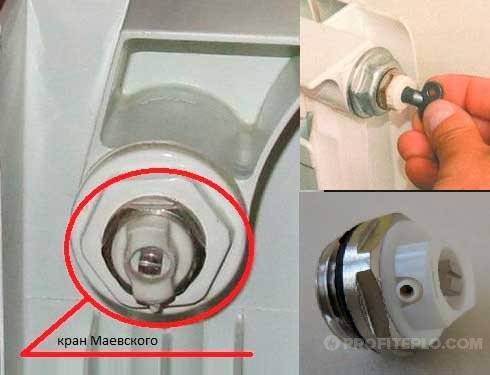

Mayevsky's manual tap on the radiator
Gas formation in aluminum radiators should be considered separately. When the metal comes into contact with a weakly alkaline coolant, hydrogen is released, which accumulates at the highest point of the heater. If the radiator is not equipped with an air vent, over time the gas plug will not allow the coolant to freely pass through the internal channels of the heater.
Automatic air vents
Devices for removing air from plumbing systems are widely available on the market. Float valves are continuous air vents
... They protect the operating system from the accumulation of air and gases. When the pressure in the system drops to atmospheric pressure, the float valve lets air into the pipes. To eliminate the cause of the appearance of air in the water supply system of the house, a check valve is additionally installed. There are air vent models already equipped with a check valve.
Air vents starting action
used to vent air when filling the system with water or to start air during drainage work.
Combined air vents
possess the properties of both previously described devices.
When choosing an air vent, the volume of air to be discharged is taken into account. This indicator can be found in the characteristics of the device. You should not choose a more powerful automatic air vent. Working half-heartedly, it will wear out faster.
For the correct operation of the air vent, the working pressure in the water supply and the quality of the liquid are important. If the density of the resource is below 960 kilograms per cubic meter, floats of a special design are installed.
Video clip about the simplest air vent - the Mayevsky valve:
A well for water is a convenient alternative to autonomous water supply in the private sector. Possessing a number of advantages, the design requires not only proper installation, equipping with a filtration system, but also timely cleaning, as well as prevention and flushing. As a result of non-fulfillment of at least one point, disruptions in the operation of the entire station are possible. For example, water from a well often comes with air. The service life of the pump, water quality and much more depend on the timely identification of the causes and their elimination.
How to prevent the formation of air in the heating system
Even at the design stage of the heating system, it is necessary to install all the elements in such a way as to ensure the free, unobstructed "circulation" of the air that is formed when the heat carrier is heated.
All closed systems must be equipped with air vents.
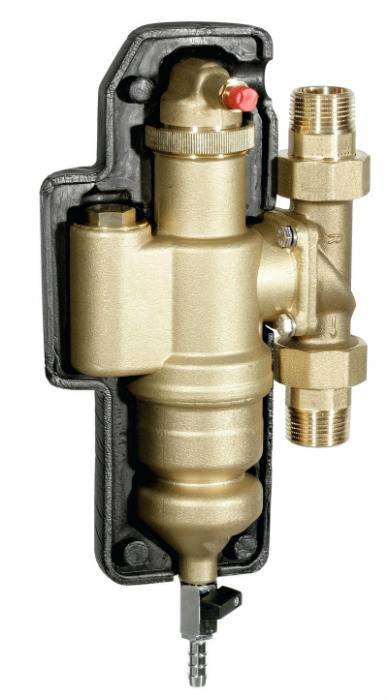

Separator of air and sludge Honeywell HF49.
In closed heating systems, air separators can be used, which allow you to completely clean the coolant, both from dissolved air and from air in the form of small and large bubbles.The separator is designed to retain and remove air particles.
We fill the system correctly
The easiest way is to pump water or antifreeze into pipelines connected to an open expansion tank. To do this, open all valves (except for the drain valve) and, by connecting a hose to the make-up connection, fill the lines and radiators with coolant
In this matter, it is important not to rush and allow air to leave the system on its own through the expansion tank.
Advice. After filling, turn on the circulation pump and the boiler, and then warm up all the heating devices. Then bleed the remaining air from them through the Mayevsky taps. Do not forget to air the pump before starting, as described above.
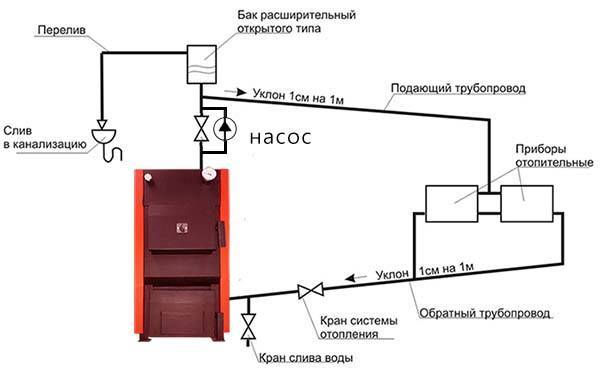

Now about how to release air from batteries and pipelines of a closed heating system of a private house. The proposed technique, constantly practiced by our expert - plumber Vitaly Dashko. is executed in the following order:
- Open all shut-off valves of the main circuits (except for the drain).
- Shut off all radiator taps, excluding the very last batteries at the ends of the hinges, so that there is circulation through them.
- Get an assistant to work. Its task is to be in the boiler room and maintain the pressure in the network at 1 bar using a pressure pump or through the make-up branch from the water supply.
- After opening the water supply, fill the main lines, expansion tank and boiler tank. Air must be vented through the safety group valve and air vent at the highest point (if present).
- Go to the first radiator from the boiler and open both taps at the same time (slowly). Let the air out through the Mayevsky valve and close the valves again. The assistant during this time does not allow the pressure to fall below 1 bar.
- Repeat the operation on all batteries, then turn on the circulation pump and start the heat generator. When the lines begin to warm up, open all the radiator valves one by one and remove the remaining air from them again.
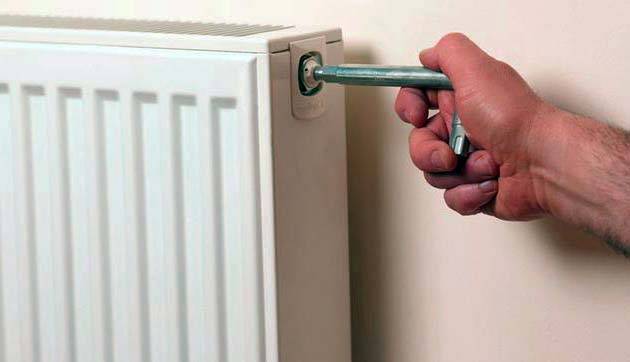

An important point. Before squeezing out the air plugs from the radiators, be sure to bleed the air from the circulation pump and turn it on for 5-10 minutes to bleed the pipelines.
After the heating devices have completely warmed up, the pressure in the system should be within 1.3-1.6 bar. This completes the procedure. If there are warm floors in the system, then they must be filled last, using the same algorithm (for a cold one!). That is, having pumped up the pressure in the main line, you need to alternately open and close the floor circuits, letting the air through the manifold valves, and then warm up and adjust the flow rate of the coolant.
Note regarding the installation of automatic air vent valves. Such a device should always be in the boiler safety group, and the second, third, and so on - only if the lines pass above the radiators. With the lower wiring in a one-story house, air accumulates in the batteries, since they are higher than the pipelines, and it is not necessary to install valves on them.
What a working pump looks like
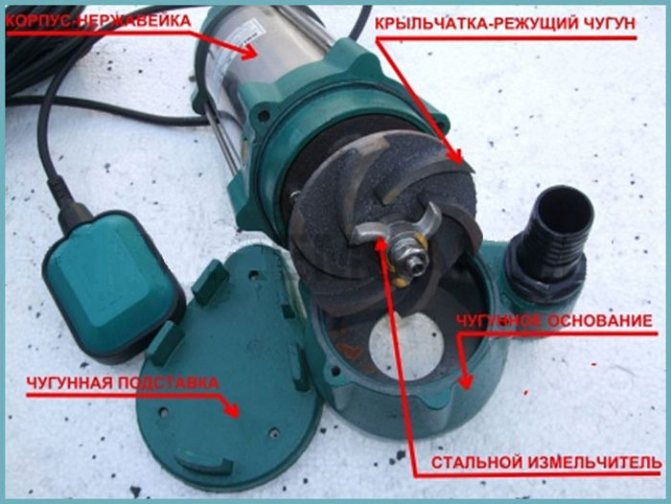

When carrying out technical inspection and maintenance, in order to avoid further repairs, you should always pay attention to the following points:
- The air blown into the pump nozzle must freely pass through the entire working cavity and out of the hole. If this does not happen, then most likely there is an airlock. It will have to be eliminated through a simple repair.
- The piston of the unit must be intact, without visible damage and monolithically elastic.
- The distance between the solenoid coils and the piston should also be monitored. Ideally, it should be in the range of 0.4-0.5 cm. Everything should be exactly like in a pharmacy. Because if the distance is less, then there is a risk of overheating and combustion of the engine.If the distance is large, then the magnetic coils will simply beat and fail.
- The distance between the pump valves and the inlet holes is also important when servicing the pump. It should be about 0.7-0.8 mm.
Causes and consequences
The following factors are the reason for the occurrence of air congestion:
- During the installation, mistakes were made, including the wrong places of bends were made or the slope and direction of the pipes were incorrectly calculated.
- Too fast filling of the heating medium in the system.
- Incorrect installation of air vent valves or lack of them.
- Insufficient amount of coolant in the network.
- Loose connections of pipes with radiators and other parts, due to which air gets inside the system from the outside.
- The first start and excessive heating of the coolant, from which oxygen is more actively removed under the influence of high temperature.
The greatest harm air can bring to systems with forced circulation. During normal operation, the bearings of the circulation pump are always in the water. When air passes through them, they lose lubrication, which leads to damage to the sliding rings due to friction and heating, or completely disables the shaft.
Water contains dissolved oxygen, carbon dioxide, magnesium and calcium, which, when the temperature rises, begin to disintegrate and settle on the pipe walls in the form of limescale. Places of pipes and radiators filled with air are more susceptible to corrosion than others.
Signs by which you can determine if there are air locks in pipes and radiators
Due to the air in the heating system, the batteries heat up unevenly. When tested by touch, their upper part has a noticeably lower temperature compared to the lower one. Voids do not allow them to warm up properly, therefore, the room is heated worse. Due to the presence of air in the heating system, when the water is strongly heated in pipes and radiators, noise appears, similar to clicks and overflow of water.
You can determine the place in which the air is located with an ordinary tap. Where there is no coolant, the sound will be more sonorous.
Note! Before removing air from the network, you should find the cause of its appearance and eliminate it. Especially carefully check the network for tightness
When heating is started, it is extremely difficult to identify loose connections, since water quickly evaporates on a hot surface
Especially carefully check the network for tightness. When the heating is started, it is extremely difficult to identify loose connections, since water quickly evaporates on a hot surface.
How to fix
The main method of eliminating water hammers is to reduce the flow rate of water in the system. In this case, it is necessary to use special valves with a long stem, as well as to increase the diameter of the pipelines.
Water hammer can be avoided by inserting a section made of plastic or metal-plastic pipes into the metal line. To compensate for the resulting loads, a section with a length of 30-40 centimeters is sufficient. The fluid velocity can be reduced by installing a pipe section in the form of a "P" symbol on the riser. In a heating system, a heated towel rail can take over such functions.
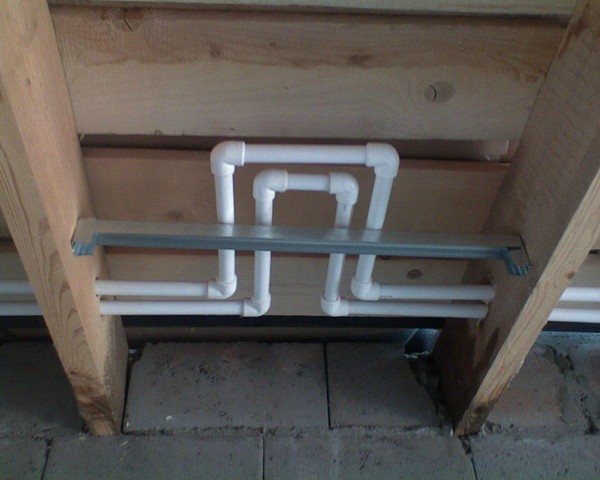

U-shaped pipe section will help prevent water hammer
One of the most effective ways to eliminate water hammer is considered to be the use of a special safety valve. Such equipment passes a certain amount of water through itself when the pressure rises, which reduces the load on the installed equipment and the system as a whole. In this case, it is necessary to correctly adjust the valve operation, since the high parameters of the opening of the mechanism will not make it possible to prevent water hammer.
Elimination of high pressure in local water pipelines involves the use of accumulators, which are mounted in the immediate vicinity of the pumping station. The minimum tank capacity is 30 liters. The device is divided into two parts (water and air) by a special partition. With overpressure, the pear expands; during load compensation, the water from the accumulator returns to the system.
How to remove an airlock from the engine cooling system
So, let's start with simple cars (old foreign cars, domestic auto industry). On such cars, air removal from the cooling system is carried out as follows:
- It is enough to drive the car onto the overpass. This must be done in such a way that the front part is slightly raised.
- Next, you need to unscrew a special plug on the radiator, after which the engine can be started.
- After several minutes of work at XX, air is vented from the engine cooling system.
However, this method will not help solve the problem on more modern cars. On such vehicles, the cooling system is of a completely closed type, that is, the air must be "expelled" for air release. To do this, you can go in two ways.
The first method involves unscrewing the expansion tank cap, then the engine with an open cover works for XX for a while, then you need to get into the car and turn off intensively, raising the speed to 3-3.5 thousand rpm. Next, the lid must be screwed on and the system operation checked.
If this method does not help, then the upper branch pipe that goes from the stove is weakened. You need to be prepared for the fact that the antifreeze itself will begin to flow out. Next, the engine starts, and you need to monitor when air bubbles disappear from the flowing coolant. Their disappearance will indicate that the airlock has been successfully removed from the system. Let's consider this method in more detail using the example of the VAZ "Kalina" model.
Before starting work, you should prepare keys for dismantling the plastic protective elements. You will also need a screwdriver to loosen and then tighten the clamps.
So, the first thing to do is remove the plastic protection. This protection on the specified vehicle model is attached to the body using studs that have rubber seals. Further, the clamp must be removed from the upper or lower branch pipe. Now you should unscrew the cap of the expansion tank
If the engine is hot, be careful, as hot coolant may spill out of the reservoir! Then the neck of the tank is covered with a clean rag. Next, a suitable rubber tube should be pulled over the neck
After that, you need to supply some air into the tank by blowing into the tube. It is advisable to do this with a compressor.
Remember, coolant is a strong poison! Only in extreme cases, blow out the tank with your mouth, while do not allow the coolant to get inside, in the eyes or on the skin, do not inhale the vapors!
- After air is supplied to the tank, antifreeze should begin to flow from the branch pipe from which the clamp was previously removed. After that, you need to make sure that there are no air bubbles in the flowing coolant, then quickly put the pipe on the fitting, put the clamp in place and tighten it. At this stage, the de-airing process can be considered complete.
- Next, you will need to bring the coolant level to normal (usually "cold" is poured 4-5 mm. Higher o, since after warming up the internal combustion engine, the liquid will increase in volume and rise to o.
- After that, the engine can be started and warmed up. In some cases, as part of this procedure, you need to slightly screw the cap of the expansion tank without tightening it. Then you should let the power plant idle, periodically increasing the speed. This method will remove excess air that may have formed when adding fluid.
- If everything is in order, the cover can be screwed on more tightly, but do not try to tighten it too tightly.
Signs of airing
If the internal combustion engine is difficult to start, an experienced driver checks the exhaust as well. If fuel gets into the engine cylinders, then even in the absence of a full-fledged start, smoke should come out of the muffler. It doesn't matter what color it will be, the main thing is that it should be, albeit barely noticeable.
Thus, if smoke does not come out of the muffler, this is the first sign of airing the vehicle (fuel system). Fuel is not going to the engine, which means there is air in the system.
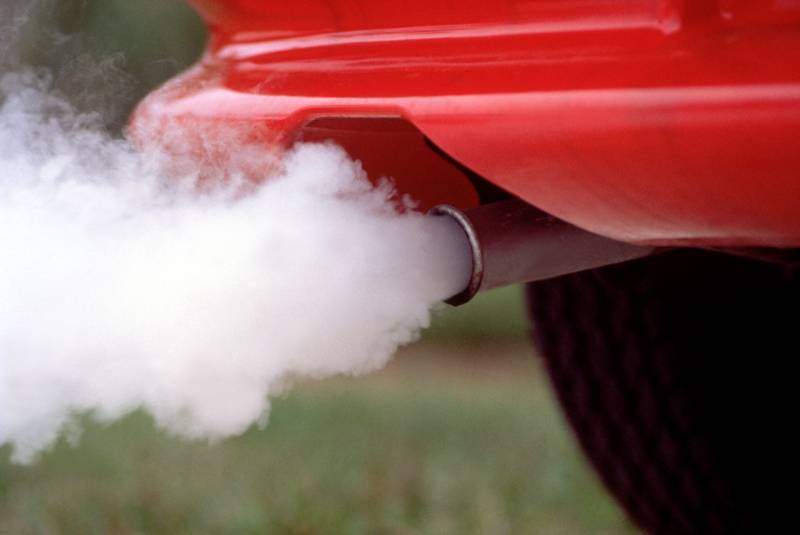

There are, of course, cases when smoke comes out, but the fuel does not enter the cylinders. The exception is explained by the fact that the smoke that remains in the system comes out. To insure against such a situation (although it happens rarely, it is possible), it is recommended to keep the starter longer - about a minute without interruption. This is enough time to fill the exhaust system with smoke.
If air enters the vehicle, then there are some peculiarities in the operation of the car. For example, launch problems can appear constantly, for several days, or do not remind of themselves for a long time. Of course, this directly depends on the strength of the air suction.
Here's what else happens:
- after starting, the engine troit, shakes, all engine operation can be assessed as extremely unstable;
- the motor starts up well "to cold", but as soon as it warms up a little, dips begin, up to a stop;
- the engine does not start at all (this happens during running conditions, when air is already sucked in large quantities).
What is the threat of the occurrence of air congestion
The presence of air in the lines will not allow providing the radiators with the required amount of coolant, which means that the heating devices will not give out the required heat and the room temperature will be lower than the desired one. The noise inherent in overcoming an airborne obstacle in the system will not cause irritation during the daytime, but at night it will not let you fall asleep. In places where traffic jams are formed, the internal environment becomes aggressive, which contributes to the active formation of rust.
The most unpleasant thing is overheating. The presence of air in the heat exchanger or in the heat “supply” line will impede the movement of the coolant, and an increase in temperature can damage the coil or pump.
The ability to bleed air from the boiler or individual sections will allow owners of private houses with autonomous heating to get rid of traffic jams on their own, preventing harmful consequences without resorting to the help of service providers.
Determination of the site of plug formation and its removal
How can you tell if there is air in the radiator? Usually, the presence of air is indicated by extraneous sounds, such as gurgling, water flow. To ensure full circulation of the coolant, it is imperative to remove this air. With a complete airing of the system, you must first determine the places of formation of plugs by tapping with a hammer on the heating devices. Where there is an airlock, the sound will be more resonant and strong. Air is collected, as a rule, in radiators installed on the upper floors.
Realizing that there is air in the heater, you should take a screwdriver or wrench and prepare a container for water. Having opened the thermostat to the maximum level, you need to open the valve of the Mayevsky tap and substitute the container. A slight hiss will indicate that air is coming out. The valve is kept open until water flows out and only then is it closed.
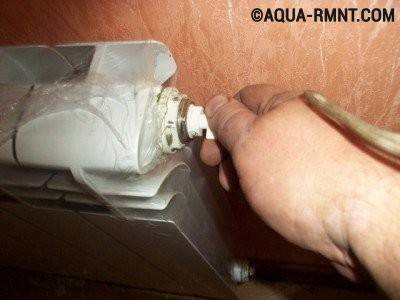

Elimination of the airlock in the heating battery with the help of the Mayevsky crane installed on it: the valve is opened with a special key or manually and kept open until water appears
It happens that after carrying out this procedure, the battery does not heat up for long or not well enough.Then it needs to be blown and washed, since the accumulation of debris and rust in it can also cause air to appear.
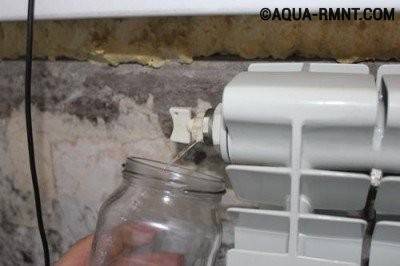

If after bleeding the air the battery still does not heat up well, try draining about 200 g of the coolant to make sure that the air lock is completely removed. If it does not help, but you need to blow out and rinse the radiator from possibly accumulated dirt
If there is still no improvement, check the filling level of the heating system. Air pockets can also form at pipe bends.
Therefore, it is important during the installation process to observe the direction and magnitude of the slopes of the distribution pipelines. In places where the slope for any reason differs from the project, air vent valves are additionally installed
In aluminum radiators, air locks are formed more intensively due to the poor quality of the material. As a result of the reaction of aluminum with the coolant, gases are formed, therefore, they must be regularly removed from the system. In such situations, it is recommended to replace aluminum radiators with devices made of better materials with an anti-corrosion coating and install air vents. In order for the heating of the rooms to be normal, before filling the heating system with water, it is necessary to timely take care of removing air from it, which prevents the normal movement of the coolant, and then in winter your house will be warm and comfortable.
Electrical problems
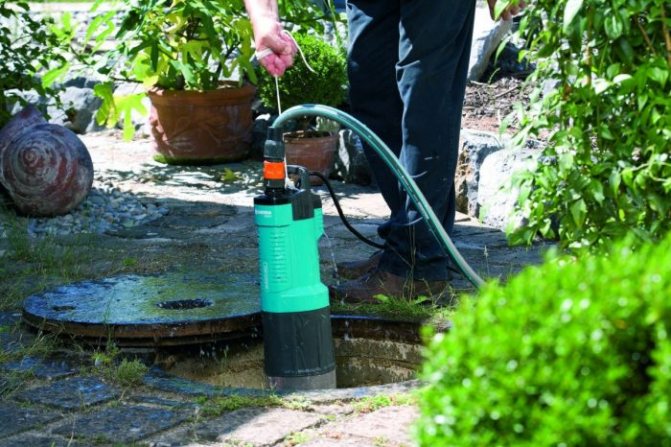

If the submersible sewage pump does not have dry running protection, then the windings of the mechanism may burn out. A clear sign may be the humming of the unit turned on and strong heating / melting of the cable. In this case, when carrying out repairs, you will have to replace the winding, which, by the way, can be seen well without disassembling the device.
Important: in order to avoid complicated repairs of the faecal unit, it is worth periodically rinsing the pump in clean water and pumping it over. This will avoid sticking of parts of the mechanism with particles of faeces. In addition, try to avoid exceeding the permissible size of the fractions that can be pumped by the pump.
Top feed in an apartment building - how to release air
Top spill buildings have the following features:
- the filing of the feed is located on the technical floor, and the return one is in the basement;
- each riser is a jumper between them, shutdown is possible both from the bottom and from the top;
- the feeding filling is done with a slight slope;
- on it, at the very top, there is an expansion device with a relief valve, while the discharge is often taken out through all floors to the elevator unit in the basement or as close to it as possible.
The function of the air vents is assigned to the vent on the expansion device. Thanks to the outlet of the discharge to the basement, the start of heating in the fall is simplified.
